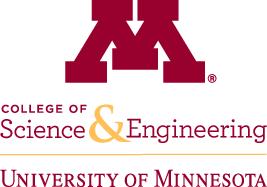Newswise — MINNEAPOLIS / ST. PAUL — The University of Minnesota announced today that it has received a $12 million grant over four years from the U.S. Department of Energy to continue leading the discovery of a new class of materials used in energy research. Nationwide, U.S. Secretary of Energy Rick Perry announced $100 million in funding for Energy Frontier Research Centers (EFRCs) to accelerate the scientific breakthroughs needed to strengthen U.S. economic leadership and energy security. The Inorganometallic Catalyst Design Center based in the University of Minnesota’s College of Science and Engineering is one of 42 EFRCs. It is one of only nine existing EFRCs that received renewal for the full four years. The Inorganometallic Catalyst Design Center is devoted to the discovery of new classes of energy-science relevant catalytic materials, especially through the exploitation of computational modeling to identify underlying structure-function relationships that are critical to advancing further, predictive catalyst discovery. “An outstanding and diverse team of researchers has worked together to make enormous progress on this research over the last four years,” said Laura Gagliardi, director of the Inorganometallic Catalyst Design Center and University of Minnesota Distinguished McKnight University Professor in the Department of Chemistry. The University of Minnesota’s research partners within Inorganometallic Catalyst Design Center include Argonne National Laboratory, Clemson University, The Dow Chemical Company, Northwestern University, NuMat Technologies, Pacific Northwest National Laboratory, University of California Davis, and University of Washington. “We’re excited to have this chance to continue our research, which is opening new fields in catalysis and material science,” Gagliardi added. “Our achievements in the next funding period will further advance our fundamental discoveries that will contribute to energy science and the economy of our entire nation.” Since 2009, EFRCs nationwide have produced more than 10,000 peer-reviewed scientific publications and generated hundreds of inventions at various stages of the patent process, fostering a wide range of new technologies that have benefitted multiple private sector companies, both large and small. The knowledge generated by the EFRCs is laying the scientific groundwork for future advances in solar energy, nuclear energy, energy conversion and storage, electronics and computation, production of fuels and chemicals, carbon capture, and control of the Earth’s subsurface. These centers integrate the talents and expertise of leading scientists in a setting designed to accelerate research toward meeting our critical energy challenges. “America’s continued energy security and global competitiveness will depend vitally on a sustained effort in science and discovery,” said Secretary Perry. “By mobilizing the talents of our nation’s top scientists and forging them into powerful, pro-active teams, the EFRC program will help ensure America’s leadership in the development of critical energy technologies and innovations.” For more information about EFRCs, visit the U.S. Department of Energy Office of Science website. To learn more about the Inorganometallic Catalyst Design Center based at the University of Minnesota, visit the Inorganometallic Catalyst Design Center website.
Contacts:
Rhonda Zurn, College of Science and Engineering, [email protected], 612-626-7959
Lacey Nygard, University News Service, [email protected], 612-625-0552
